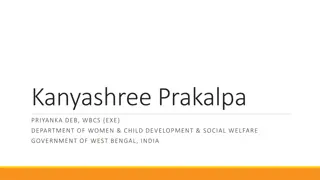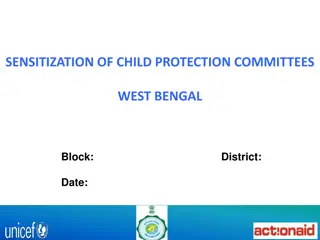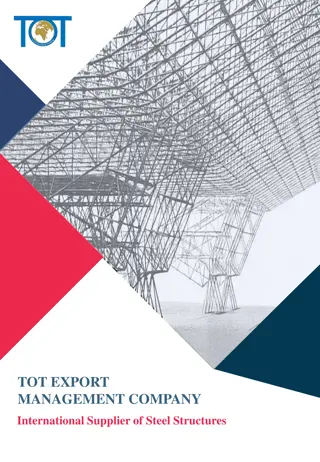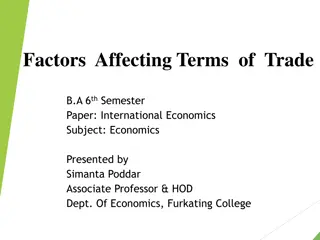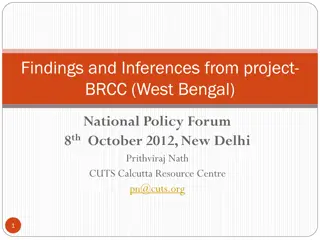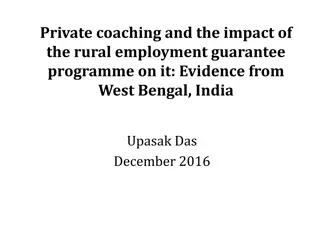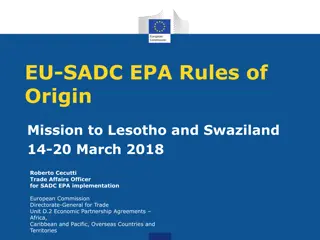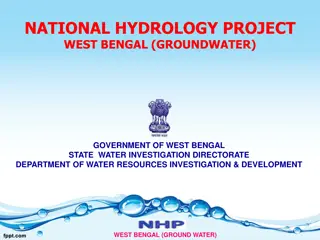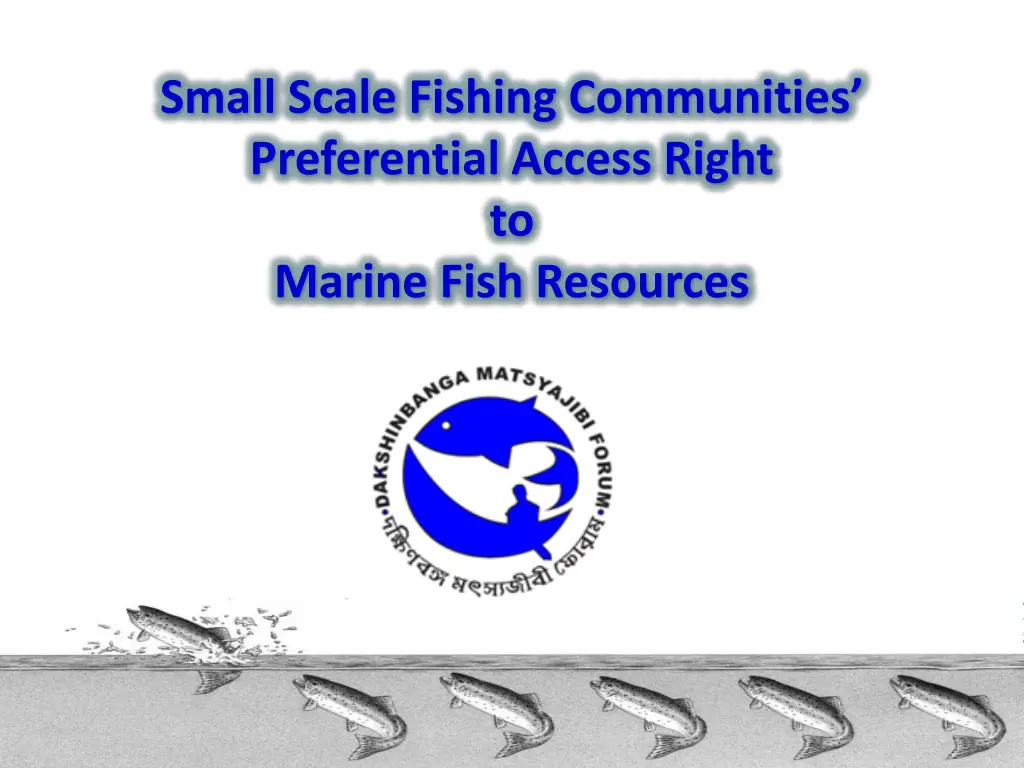
Small-Scale Fishing Communities: Access Rights & Importance
Learn about small-scale fisheries & their vital role in communities. Explore why preferential access rights are crucial for sustainably managing marine fish resources and supporting livelihoods. Discover key characteristics and the significance of small-scale fishing sectors globally.
Download Presentation

Please find below an Image/Link to download the presentation.
The content on the website is provided AS IS for your information and personal use only. It may not be sold, licensed, or shared on other websites without obtaining consent from the author. If you encounter any issues during the download, it is possible that the publisher has removed the file from their server.
You are allowed to download the files provided on this website for personal or commercial use, subject to the condition that they are used lawfully. All files are the property of their respective owners.
The content on the website is provided AS IS for your information and personal use only. It may not be sold, licensed, or shared on other websites without obtaining consent from the author.
E N D
Presentation Transcript
Small Scale Fishing Communities Preferential Access Right to Marine Fish Resources
What is Small Scale Fisheries Sector ? Small Scale Fisheries is the fisheries sector where the operators engage directly in the work in fishing mainly for subsistence as against commercial purpose and do not exploit others labour. Small scale fish workers are generally comprised of fishers, fish farmers, fish vendors, fish sorters and dryers alongwith ancillary workers like net or small boat makers. In India there are about 2 million small scale fish workers in marine fisheries with a dependent population of roughly 10 million.
Small Scale Fisheries Some Characteristics Small-scale Fisheries Small-scale fisheries represent a diverse and dynamic set of activities that include various traditional low-technology, low-capital fishing methods, as well as fish processing and marketing, boat building and net making. Small-scale fisheries tend to be strongly anchored in local communities. For many small-scale fish workers, fisheries represent a way of life; hundreds of millions of rural people in developing countries depend on fisheries for their livelihood. Small-scale fisheries make a critical contribution to nutrition, food security, local livelihoods with women s employment, national economies and poverty alleviation especially in developing countries. Despite their importance, many small-scale fishing communities continue to be marginalized, and their contribution to food security, nutrition and poverty eradication which benefits both them and the society at large is not fully realized.
The Marine Fishing Sector Some Relevant Information 3 Great Seas. 8,139 Kilometer Long Coastline 20.2 Lakh Square Kilometers EEZ 30 Lakh Fish Workers 40 Lakh Tonnes Annual Fish Production 40 Thousand Crore Rupees Export Earning Scale Category Definition Large Scale Mechanised Length / Horse Power / Tonnage Motorised Manual Length / Horse Power Sail & Oar only Small Scale Small Scale Fishing Communities are by far the Largest Primary Non-Consumptive Stakeholders of our Water Bodies and Their Natural Custodians GOOD FISH NEEDS GOOD WATER
Why Do The Small Scale Fishing Communities Need Preferential Access? Catch by Depth Catch by Category Depth (mtrs) Catch (%) Category (boat) Catch (%) 0 - 100 86.62 Mechanised 79.50 100 - 200 5.87 Motorised 18.54 200 - 500 2.60 Non-Motorised 1.96 Oceanic 4.91
Small and Mechanised Sector Catch Comparison 1961 to 2010
Changing Composition of Indian Fishing Fleet 1961 to 2010
Fishing Boats in Operation by Category in 2012 Recommended & Actual 80000 72550 71213 70000 60218 60000 50000 40000 32221 30000 20000 10000 0 Recommended Actual Recommended Actual Mechanised Motorised Recommended Actual % Mechanised: 32,221 72,550 125.16 % more Motorised: 71,213 60,218 15.55 % less
Trend in Quantity of Catch by Category 3000 Large Scale Small Scale Over years catch by Small Scale remains almost same. In 1960-61 Small Scale meant only manual fishing by less number of boats. In 2010-11 Small Scale constituted of mostly motorised boats with more numbers. Considering the extensive and intensive icrease, the catch per effort has drastically diminished 2500 2000 1500 1000 500 0 1960-61 1973-74 1980-81 1998-99 2005-06 2010-11
Why Preferential Access Right for Small Scale Fishers ? Small Scale Fisheries is more Traditional Small scale fisheries have grown through ages. Coping and balancing with the nature of natural fish resources in specific ecological and environmental setting. Thus acquiring traditional knowledge. Small Scale Fisheries is more Sustainable To be sustainablenatural resource utilisation has to match its regeneration. Slow in extraction and non-aggressive in nature small scale fishing is most suitable for this principle. Small Scale Fisheries is more equitable Small scale fisheries through its small ownerships and large patnerships distributes the wealth and income earned through fishing in a scale incomparable to mechanised fisheries.
How to Achieve Preferential Access Right ? - 1 Matching fishing effort to available sustainable yield The fishing effort should match the sustainable yield. This should be estimated and enforced area wise taking into consideration the specific number, nature and area of operation of fishing crafts.
How to Achieve Preferential Access Right ? - 2 Moratorium on Registration of New Mechanised Boats In view of the full or over exploitation of fish resources in near shore area the following measures should be considered Moratorium on registration of new mechanised boats; Immediate stoppage of government subsidy, loan etc. for new mechanised boats; For small fishing boats preference of registration to owner operators.
How to Achieve Preferential Access Right ? - 3 Reducing the Effort to Match Available Resources Measures should be taken to first reduce the number of mechanised fishing boats applying the principle of subsidiarity.
How to Achieve Preferential Access Right ? - 4 Smaller fishers are to have the first right to catch, larger ones are to get the rest. This may be enforced through following measures Extend exclusive fishing zone for small fishers upto territorial waters [12 nautical miles]. 6 months fishing ban on mechanised fishing, 3 months fishing ban on motorised fishing, no ban on manual fishing. Small scale fish workers to be adequately compensated. Introduce quota of catch for mechanised fishing sector providing for the requirement of the small fishing sector.
How to Achieve Preferential Access Right ? - 5 Ban Destructive Fishing Introduce total ban on destructive fishing methods like bottom trawling and purse seining. Stop fishing with fish finders and/or LED lights that make fishing very aggressive and indiscriminately destroy the natural fish stock.
How to Achieve Preferential Access Right ? - 6 Recognise the small fishing communities right to fish in coastal/marine protected areas like Sundarban, Bhitarkanika, Gahirmatha, Gulf of Munnar, Malban. There should be Mandatory informed consent of the small and traditional fishing communities before imposition of any restriction on their livelihood for conservation. Adequate compensation and rehabilitation of the affected fishing communities. Mandatory participation of the small and traditional fishing communities dependent on the marine and coastal protected area in the design and management of the protected area.
How to Achieve Preferential Access Right ? - 7 No foreign fishing vessel Build capacity of Indian fleet for deep sea fishing: In view of the dismal outcome of the LoP scheme and the threat it bears to the Indian fishing fleet the LoP scheme should be discarded and Murari Committee recommendation regarding capacity building of Indian fishing fleet for deep sea fishing should be implemented.
How to Achieve Preferential Access Right ? - 8 Protection from encroachments and pollution In view of the rampant encroachments on the coast and severe pollution of the coastal waters the government should Recognise the necessity of a comprehensive and effective Act on coastal zone to conserve the coastal natural resources and the livelihood of small and traditional fishing communities dependent on those resources. Provide for mandatory consent and participation of the fishing communities and the fisheries department in the sanctioning process of any project on the coast.
FAO VGSSF & Way Forward Objectives: Enhancing Contribution of Small Scale Fisheries; Equitable development of small-scale fishing communities and poverty eradication; Sustainable utilization, prudent and responsible management and conservation of fisheries resources; Voluntary Guidelines for Securing Sustainable Small- Scale Fisheries in the Context of Food Security and Poverty Eradication (SSF Guidelines) represent the first ever international instrument dedicated to small-scale fisheries. They represent a global consensus on principles and guidance for small-scale fisheries governance Guiding principles: Human rights and dignity; Respect of cultures; Non-discrimination; Gender equality and equity; Equity and equality; Consultation and participation; Rule of law, Transparency & Accountability; Economic, social and environmental sustainability; Holistic and integrated approaches; Social responsibility; Feasibility and social and economic viability. Ask for implementation A. Compliance in Policy; B. Compliance in Law; C. Compliance in Executive Action.
NPMF and Way Forward The National Policy on Marine Fisheries 2017 has the following points that are relevant to preferential access of small scale fishing communities to marine fish resources A. Principle of Subsidiarity; B. Gender Justice; C. Sustainability; D. Precautionary Principle; E. Extension of the exclusive fishing zone for small scale fishing communities; F. Protection of livelihood rights of fishing communities in protected areas. Ask for - implementation A. Action Plan; B. Responsibilities; C. Time Line. Address - Inadequacies, Deficiencies and Wrong Notions





